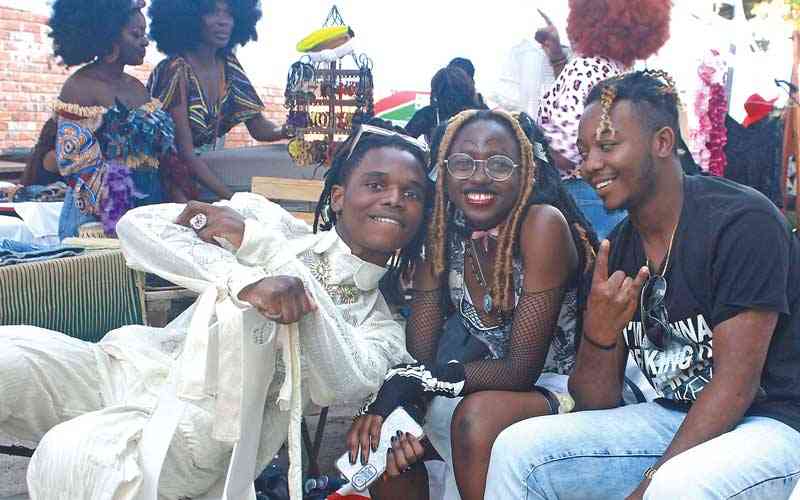
THE language of fashion was loud and clear at the recently held Skeyi and Strobo Fabrik Party at Alliance France de Harare.
The annual event, in its sixth edition dubbed Fabrikans Convention, has developed into a three-day showcase with a street wear market, workshops, fashion shows, visual art, live bands and a roster of disc jockeys.

Young people in Zimbabwe can be credited fully for inventing a new language that finds expression through music and other communication channels.
Most parents and guardians understand the need to accept the ever-evolving culture, which helps in bridging the generation gap.
Fashion, however, has not been more favourably embraced. Stereotyping creates public perception of young people as drug addicts, thieves and sex workers, resulting in self-censorship.
Brainchild of Ulenni Okandlovu and Caligraph mural painting, the duo of Danai Jeche and Marcus Zvinavashe, said the SS Fabrik Party created a safe space to celebrate the fashion subculture, provide young people the opportunity to fully express themselves.

- Mavhunga puts DeMbare into Chibuku quarterfinals
- Bulls to charge into Zimbabwe gold stocks
- Ndiraya concerned as goals dry up
- Letters: How solar power is transforming African farms
Keep Reading
As the term Fabrikans suggests, the event brings together like-minded people with a deep interest in exploring creative possibilities through fashion and fabrics.
The event calls for an open mind free of judgement and preconceived ideas about what clothes should look like.
It is an eye-opening and rewarding experience to see young people dressed up in ways which demonstrate unfettered imagination and inventive creativity which should inspire efforts in other fields such as engineering, architecture, medicine, law and social sciences.
One noticeable thing about the fashion design was the use of available resources.
While the local market for clothing is saturated with cheap imitations of international luxury brands such as Louis Vuitton, Balenciaga, Gucci and Prada, there was no evidence of such aspirations at the convention.
The clothes looked raw and were largely made from local material. Some were made from recycled fabrics and second-hand clothing flooding the continent from overseas.
A lot of the costumes were mended, patched, shredded, had holes poked in them and dye spilled over them.
Denim featured prominently as it worked well in creating deconstructed pieces from repurposed garments.
Some of the ensembles incorporated plain black or white cotton material bearing allusion to spiritual practices from its use by apostolic sects and traditional shamans.
Safety pins, brooches, neckties and various other trinkets were frequently appropriated in unusual ways.
The clothes were accessorised with Afro wigs and natural hair, combed out, tied in different styles, and adorned with various symbolic objects such as cowrie shells or link chains.
Others wore their hair cropped short and dyed pink or platinum blond.
Long tresses of synthetic hair did not look out of place either.
Earrings were worn in various ethnic designs and on multiple piercings.
The styles were not restricted to a specific gender as they could be seen on both males and females in the motley crowd.
Fashion at the SS Fabrik Party was not only about design, but also relating to how clothes are assembled in creating a meaningful look that exudes energy.
Chest-baring clothes for men and female outfits exposing a thigh or cleavage are usually deemed too erotic in Zimbabwe’s mainstream culture.
In Harare such misconceptions have led to mischaracterisation of the individual’s sexual orientation and moral standing, resulting in catcalling, insults, harassment and sexual assault.

The SS Fabrik Party is a platform perfectly suited to help change public perception and liberate fashion as a means of self-expression.
A young woman put a twist on the popular valentine fashion staple of matching red panties and bra by having the brassiere on top of her crisp white shirt.
Instead of down and under, the red lace G-string thong was elevated to a facemask covering the nose and lips, reminiscent of the COVID-19 era.
The rest of the look was composed from thick yarn material and denim, heavily layered into an asexual look devoid of titillation.

Without uttering a syllable, the bold experimental look spoke volumes on the socio-economic and political outlook of the country’s young people.










